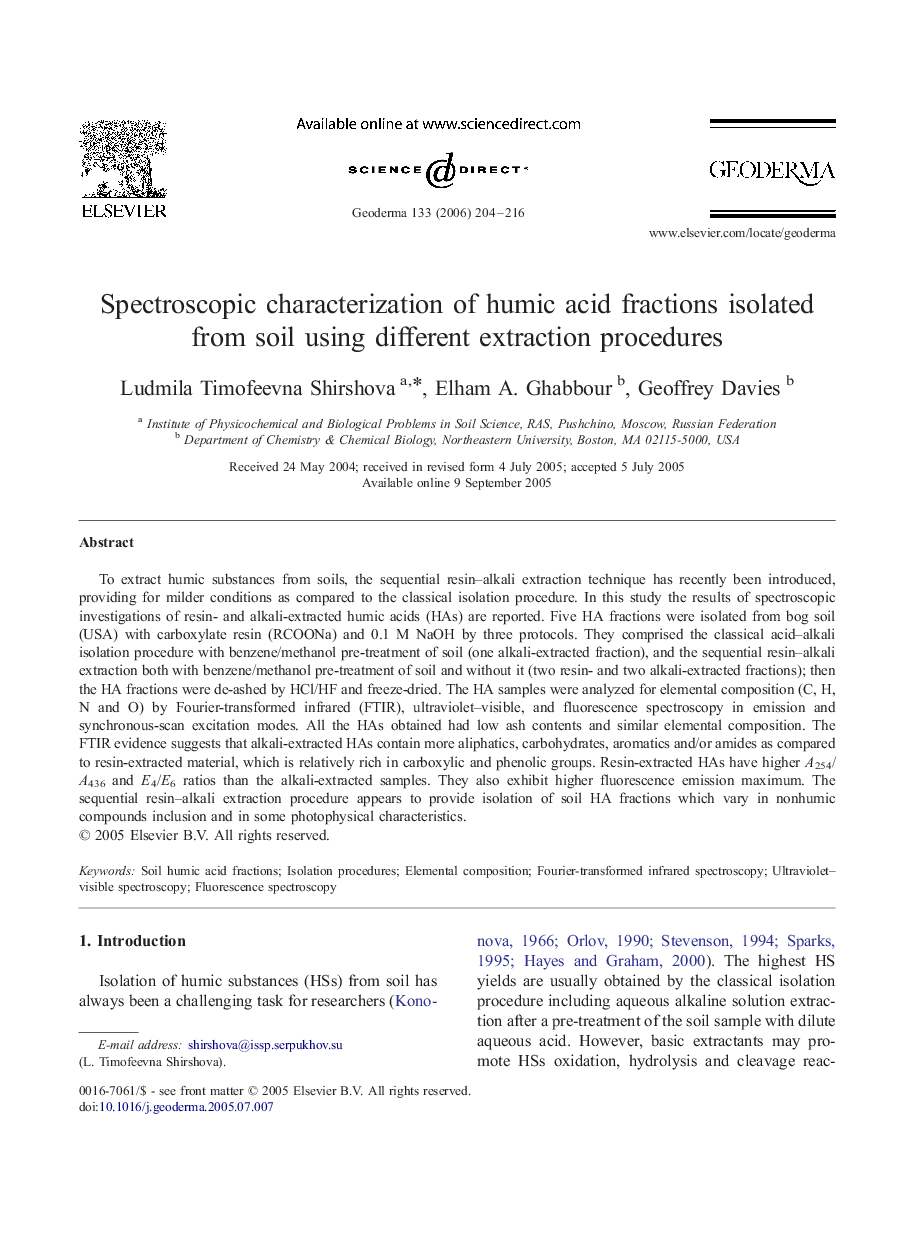| Article ID | Journal | Published Year | Pages | File Type |
|---|---|---|---|---|
| 4575829 | Geoderma | 2006 | 13 Pages |
To extract humic substances from soils, the sequential resin–alkali extraction technique has recently been introduced, providing for milder conditions as compared to the classical isolation procedure. In this study the results of spectroscopic investigations of resin- and alkali-extracted humic acids (HAs) are reported. Five HA fractions were isolated from bog soil (USA) with carboxylate resin (RCOONa) and 0.1 M NaOH by three protocols. They comprised the classical acid–alkali isolation procedure with benzene/methanol pre-treatment of soil (one alkali-extracted fraction), and the sequential resin–alkali extraction both with benzene/methanol pre-treatment of soil and without it (two resin- and two alkali-extracted fractions); then the HA fractions were de-ashed by HCl/HF and freeze-dried. The HA samples were analyzed for elemental composition (C, H, N and O) by Fourier-transformed infrared (FTIR), ultraviolet–visible, and fluorescence spectroscopy in emission and synchronous-scan excitation modes. All the HAs obtained had low ash contents and similar elemental composition. The FTIR evidence suggests that alkali-extracted HAs contain more aliphatics, carbohydrates, aromatics and/or amides as compared to resin-extracted material, which is relatively rich in carboxylic and phenolic groups. Resin-extracted HAs have higher A254/A436 and E4/E6 ratios than the alkali-extracted samples. They also exhibit higher fluorescence emission maximum. The sequential resin–alkali extraction procedure appears to provide isolation of soil HA fractions which vary in nonhumic compounds inclusion and in some photophysical characteristics.
